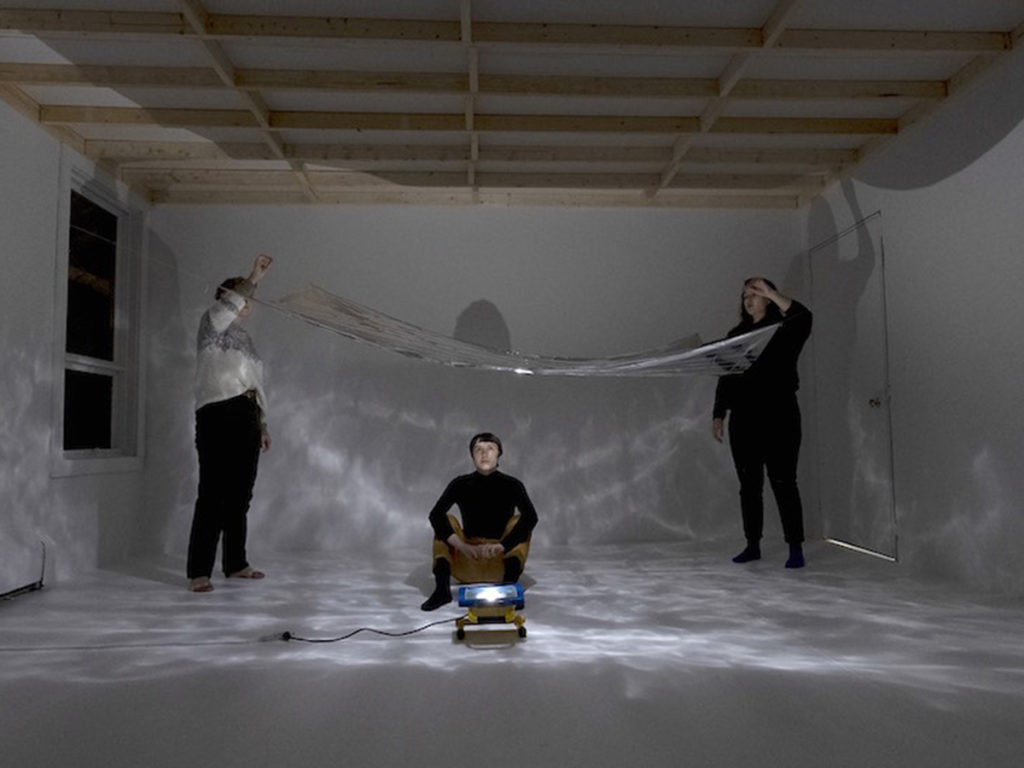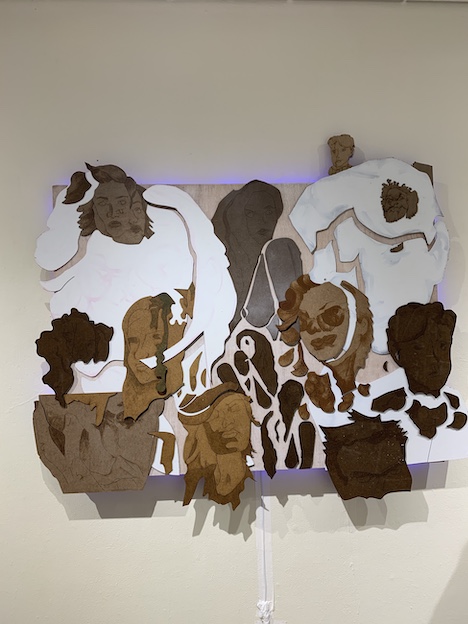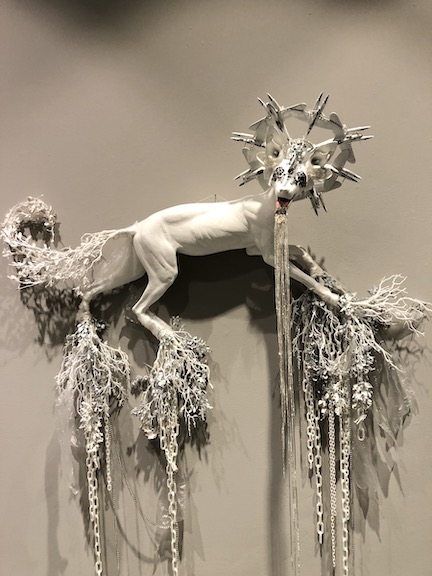Emerson Students Curate Virtual Art Exhibit

Fifteen Emerson undergraduate students have curated Emerson Contemporary’s first virtual exhibition, What’s Next? Art for Tomorrow, a collection of portraits, film, site-specific installations, and sculpture that asks how one constructs identity in a modern world.
The exhibition, being hosted on Artsteps, was developed as part of the course, Curating Contemporary Art, under the direction of Leonie Bradbury, Emerson’s Foster Chair of Art Theory and Practice, and Distinguished Curator-in-Residence.
Explore What’s Next? Art for Tomorrow
What’s Next? was supposed to be the final exhibit of the 2019-2020 season at Emerson Contemporary, 25 Avery Street, Boston (formerly Emerson Urban Arts: Media Art Gallery), but the show had to be moved online amid the COVID-19 pandemic.
“The exhibition is going better than imagined from 3D to virtual land, and I couldn’t be more nerve-wracked and excited,” said Alexis Acosta ’21, a member of the curatorial team. “The art world, whether virtual or physical, still speaks volumes to those who are exposed or expose themselves to it.”

The exhibition represents the voices of an emerging generation of artists. Emerson students were responsible for all aspects of the exhibition, including design, building a website, loan agreements, the object checklist, educational materials, social media assets, and press materials.
The students put out a call for emerging artists in the Boston area; out of 39 responses, 13 artists were selected to be showcased.
The selected works look at how aspects of an individual’s identity – such as community, culture, and language – can act both as an obstacle in communication and create genuine relationships that deepen our understanding of ourselves.
In addition to Acosta, student curators include Bia Bauzys ’20, Andy Caira ’20, Olivia Ek ’21, Simon Gusev ’20, Jacob Kornfeld ’21, Yike Luan ’20, Megan Michaud ’20, Shafaq Patel ’20, Christopher Polito ’20, Michael Rocco ’20, Maya Rubio ’21, Bao Song ’20, Emily Tegel ’20, and Lin Vega ’20.
Artists:
Daequan Collier’s What If Black Boys Were Butterflies? Is an experimental short film centered around an intimate, off-screen conversation between two Black men about the essence of Black boyhood. The film aims to capture the complexities of Black adolescence, as well as familiarize viewers with contemporary realities.
Don Claude (C. Eshun) presents a series of untitled photographs focused on portraiture that invites the audience to reflect on racial prejudices by defying customary photography practices.
Farimah Eshraghi’s Babel series features Iranian women surrounded by texts about female representation. She investigates how the patriarchal system has shaped language as an oppressive force in the lives of women through folklore, fairy tales, literature, and speech.
Zoe Friend’s “War,” a full-sized, full-body coyote, aims to fill the viewer with the sense of theatrics, wonder, and subtle ghoulish guilt of nature consumption in the name of ease, entertainment, and thoughtlessness.
“Mirror Mask” and “Felt Cute Today, Might Delete Later” by Siena Hancock employ conceptual and craft processes to explore how womxn’s experiences are constructed, criticizing selfie culture and outside perception.
“Untitled,” by Karli Janell and Nick Batzell, composed of old studio walls, LED lights, and laser-cut Masonite, portrays people of different gender, age, and race.

Juyon Lee’s “Corner Drawing,” a three-dimensional site-specific installation, challenges the viewer to reconsider the indexical quality of material in terms of the human experience. By disrupting the function of familiar materials like Mylar, wood, drywall, and light, the spectator experiences the ephemerality of human presence and the potential of human agency.
Arushi Singh’s video and photo collection, Paran Aamad, abstracts the intricate movements of the Indian classical dance of Kathak.
“Broken Masculinity,” a three-dimensional site-specific installation by Bryant Skopek, asks the audience to reflect on concepts of trauma, anxiety, and redefine the idea of a “broken” individual.
The video piece Patron Saint, by Georden West, MFA ’19 manifests magic and innovation, operating through an inherently queer medium of gender expression: fashion. West fuses Jamall Osterholm’s fashion line and mystical landscape to explore how the power of fashion and media unpacks traditional conventions of gender, race, and sexuality.
Marika Whitaker uses map pins to locate and articulate power dynamics in “I Looked Away When I Answered.”
Zhidong Zhang’s photographic series, Natural Impersonation, digests how sexuality and identity are constructed under the repression of homosexuality in Chinese culture.
Categories